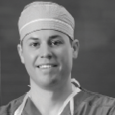What do you consider to be the definition of refractive cataract surgery?
What are the biggest barriers to adoption of the more widespread practice of refractive cataract surgery?

Rana Altan-Yaycioglu, MD, FEBO
• Acibadem University, Adana, Turkey
"The term refractive cataract surgery is used to define the replacement of the cataractous lens with advanced lens designs to correct distance, intermediate, and near vision, with the goal of reducing or eliminating patients’ dependence on glasses. Improvements in multifocal IOL technology have enabled surgeons to achieve better results for patients with fewer complaints of glare and halos. However, there is still need for improvement. For example, these lenses are not suitable for patients with irregular corneas, severely dry eyes, macular degeneration, or retinal disorders.
To achieve a successful outcome with these lenses, surgeons must meticulously evaluate patients, perform surgery without any complications, and have a well-centered capsulotomy and IOL. Additionally, precise measurements with sophisticated biometry devices are necessary, which may not be attainable for every surgeon. In my opinion, these are the possible obstacles to the more widespread use of refractive cataract surgery.”

Christopher L. Blanton, MD
• Inland Eye Institute, Colton and Rancho Cucamonga, California
"Refractive cataract surgery is the replacement of the natural human lens with a synthetic lens designed to reduce the patient’s need for spectacle correction. Ideally, not only does it incorporate a solution to correct distance vision, but it also addresses—to the greatest extent possible—intermediate and near visual needs. And this is the rub. The biggest barrier today to refractive cataract surgery is that we have not perfected the physiologic beauty of the youthful human lens.”

Jay S. Pepose, MD, PhD
• Pepose Vision Institute, St. Louis, Missouri
"My definition of refractive cataract surgery is cataract surgery with a goal to achieve a specified refractive outcome at a given vergence. I think the biggest barrier to more widespread adoption of the practice of refractive cataract surgery is a lack of surgeon confidence in strongly recommending a specific lens design for a patient given his or her vocation and/or avocation (as opposed to providing a menu of possible lens options). Another barrier is the lack of availability or training to provide some form of laser vision enhancement should the refractive target not be reached.”

Gregory D. Parkhurst, MD, FACS
• Parkhurst NuVision, San Antonio, Texas
"Refractive cataract surgery involves an ever-expanding list of tools, techniques, procedures, and services that revolve around reducing or eliminating the need for glasses and contacts after cataract surgery. The simplest way to define it is to understand what it is not. The opposite of refractive cataract surgery is basic manual cataract surgery with monofocal IOL implantation, without a strategy to use any laser vision correction postoperatively to fine-tune the refractive result when necessary. Basic manual cataract surgery means you are removing a cataract to restore optical clarity and using a monofocal IOL with a general target in mind (distance, intermediate, or near). You are not treating astigmatism or using intraoperative diagnostics to ensure that the focusing is supremely accurate. Therefore, a patient undergoing successful basic manual cataract surgery with a monofocal IOL will have better clarity of vision and should expect to wear glasses for most things, if not for everything.
Once that is understood, refractive cataract surgery becomes everything else. Patients undergoing refractive cataract surgery should have an expectation of reducing—if not eliminating—their need for glasses and contact lenses postoperatively. Some of the more common tools and refractive services used to accomplish this include limbal relaxing incisions, laser arcuate incisions, toric IOLs, intraoperative aberrometry, multifocal IOLs, extended depth of focus and accommodating IOLs, and/or monovision for presbyopia. The ability to postoperatively fine-tune the results with corneal laser vision correction is also very important.”

Rick Potvin, MASc, OD
• Science in Vision, Akron, New York
"Refractive cataract surgery is a term that has been used in the past to specifically identify a surgery designed to eliminate residual refractive error in patients. It is the natural evolution of cataract surgery—a product of the availability of toric IOLs to address astigmatism and of multifocal or extended depth of focus IOLs for patients interested in reducing their dependence on spectacles at all distances. It is also a product of modern ocular biometry and improved formulas for calculating IOL power, which have significantly increased the likelihood of a surgeon’s hitting his or her refractive target. As such, the need for a distinct term has disappeared. The current standard of care should require that all cataract surgery, in the absence of complicating pathology such as keratoconus, be considered refractive cataract surgery.”




